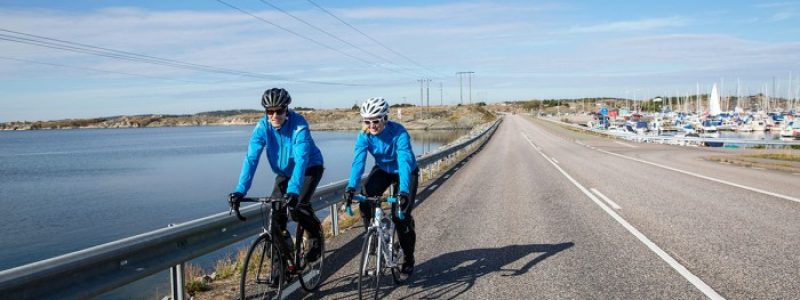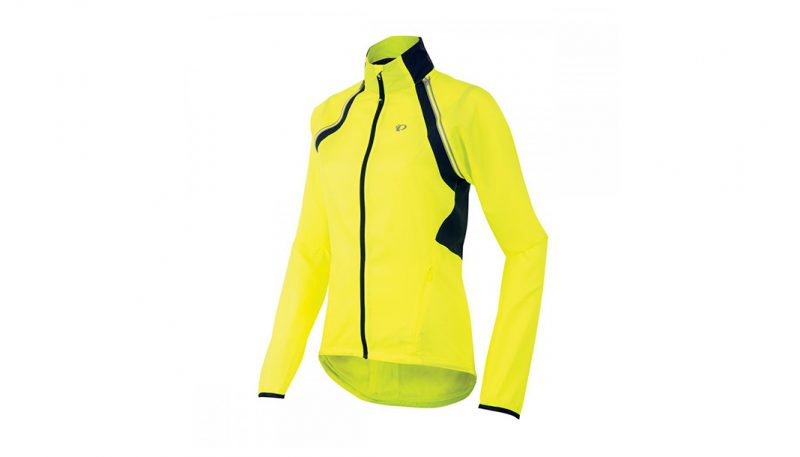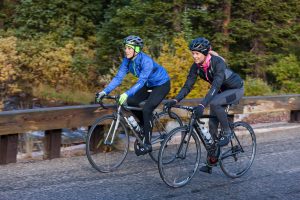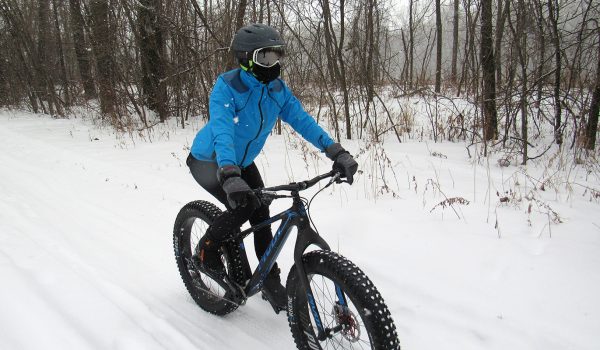
Road Cycling Jackets
While jackets for mountain biking and road cycling can often be used interchangeably between the two, specialized design features and fabrics specific to road biking mean it can be best to look for a jacket specialized for that kind of riding. Click below to access our most recent tests of the best road cycling jackets for both women and men.
The Best Road Cycling Jackets
Road Cycling Jackets by: Boad Swanson
The best cycling jackets for road riding not only beat back the rain and adverse weather conditions but also fit closely around the rider’s torso to prevent catching wind like a boat sail.
With an overwhelming number of options in this category, buyers should consider comfort, durability, performance, and price. Walk through these steps, then read our jacket reviews that compare specific models side-by-side to choose the best product for you. Options for hoods, drawstrings, pockets, fabric type, hemlines, etc. vary, so getting to know your personal preference is helpful as you dig into your search.
Consider Your Average Riding Conditions
What type of rider are you? Before you start shopping, honestly consider the type of riding you do most often. Are you a fair-weather rider, going out only when the sun shines and you can get away with limited clothing? Do you ride consistently no matter what Mother Nature throws at you? Are you planning for a trip where you’ll need to be prepared for several different weather scenarios? Or do you typically ride within a range of weather conditions that keep you out of extremes but definitely expose you to weather complications a solid piece will help to mitigate? If you consistently battle rain and mist, you’ll want a sturdy waterproof jacket. If you stay within a dry, cool-to-warm climate range, a windproof jacket should be enough for cool mornings or light rain. If you experience a little bit of everything as you ride throughout most of the year, a reliable water-resistant soft shell may be your best investment.
Waterproof Hard Shell
Traditional waterproof hard shell jackets are designed to keep you bone dry during rainy weather and protect against wind, but they usually do not provide insulation against the cold. It is a layering jacket to be worn in conditions where harder rain or snow is likely. Gains in shielding against rain often come at a loss in breathability and the ability to easily stow when not needed. Hard shell jackets contain a membrane sandwiched between layers, which contains tiny pores. These pores let heat escape from the inside, but are too small to let in big drops from outside the jacket. They will often come equipped with vents under the arms and around the neckline, which offer relief as body temperature varies. There are dozens of brands and models which will tout waterproof credentials, but to truly stay dry in a steady rain, one needs to invest some money. Shy away from too-good-to-be-true bargains.
Windproof Jackets
Windproof jackets are lighter than hard shells, built to resist water and are highly breathable. Ideal for chilly mornings before the sun comes up, light showers or unpredictable conditions, these jackets come equipped with the highest quality in breathability features while also protecting against wind and should stow easily in a jersey pocket.
Soft Shells
Soft shells combine the best of all worlds but don’t do any one thing exceptionally well. They are water and wind resistant, breathable and solid barriers against cold. Their stretchy fabric moves with your body with limited restriction and they can be perfect jackets to wear around town or during other outdoor activities. Some come with insulation and some don’t so analyze the type of temperatures you’ll do most of your riding in and if it ends up being sub-freezing, opt for the insulation. By definition, though, a soft shell is a Swiss army knife. For the average rider in a typical climate, it is an excellent all-around utility choice.
Dig into the engineering
Gaining enough knowledge about design and engineering subtleties will help you make informed decisions while being able to spot inflated prices that don’t pack the quality you seek. There are key features in a jacket that will help you differentiate quality, such as ventilation, pocket design, zipper styles, hoods, and seam taping.
Taped Seams
It is best to only buy jackets with taped seams, which means the holes made by the sewing machine are taped over. High-quality jackets will be “fully taped” where all the seams are protected. Lower quality jackets are “critically taped” where only the shoulder and back seams are protected.
Vents
The best jackets will have vents under the arms, in the chest or around the neck, allowing air to flow more freely than the membrane can offer alone. Letting natural air in will enable moisture to more quickly escape or evaporate, which will keep you dry.
Pockets
Look for jackets which provide side, back or chest pockets based on your preference. The best jackets will provide pockets big enough to allow a map, phone and a small amount of food while providing a reinforced lining for extra dryness.
Zippers
Older jacket models will come with storm flaps inside and out, but it does create more weight and bulk, so manufacturers have opted for the more expensive waterproof zippers. This is becoming almost standard in the jackets we typically test.
Hood
A hood is a true preference decision. Some people like them and some don’t. In a long ride where a torrential downpour is likely, a hood will be useful, but these types of riders are a rarity. Make sure the hood fits over the helmet and can easily stow within the neck lining. Also, understand a hood will billow in the wind, so look for a jacket with drawstrings that cinch taut around the helmet.
Waterproof Jackets
All waterproof jacket surfaces will be coated with a durable water resistant (DWR) finish. A chemical coating which causes water to bead and roll of the jacket. Jackets will come with waterproofing scores. Understanding waterproofing scores used to explain just how waterproof a jacket is will help you make an informed decision. For example, a jacket that is waterproof to 10,000 mm means you could put a square 1- x 1-inch column over the fabric and fill it to 10,000 mm before it would leak through. Suffice it to say, the higher the number, the more waterproof the jacket. It’s good to know 5,000 to 10,000 is the range to look for. Cost likely increases with higher waterproofing numbers.
Windproof Jackets
Windproof jacket breathability is important to understand based on the type of riding you plan on doing. There are key numbers to understand with windproof jackets as they explain just how breathable the jacket will be. For example, 12,000 g/m2 simply means it can transfer 12,000 grams of water from the inside to the outside over 24 hours within one square meter of fabric. As with the waterproofing numbers, the bigger the number, the more breathable it is, which will likely increase cost. Remember, windproof jackets will have some water resistant features which will provide some protection when caught in light rains, drizzles or muddy conditions. But don’t expect a windproof jacket to be a year-round jacket. These jackets are typically made from nylon or polyester. Look for jackets that have a small percentage of spandex blended in, which will increase your ability to move dynamically without feeling restricted. Most windproof jackets come with a DWR coating, which gives you the water resistance you need in mild weather. Just remember waterproofing scores and skew toward a lower number with a windproof jacket.
Softshells
Softshell jackets are the most versatile jackets on the market. They are defined by soft, stretchy material, which lays comfortably against the skin. Although a fleece or an insulated jacket can provide better warmth, soft shells combine the best of all jackets providing warmth, comfort, protection against cold, wind and moisture. Coated with a DWR coating, which causes water to bead and run off, they are not built with a water-resistant membrane, thus increasing breathability and stowability. These jackets are windproof due to the nylon or polyester/spandex blend, which is pretty standard. Soft shells will often include vents for increased airflow, but know whether it’s a feature you want. Vents can clearly compromise body temperature to your disadvantage if you’re wearing it to defend against cold.
Stretch woven
Stretch woven jackets rely on nylon weaving which will resist water and wind, will stretch as your body moves, will weigh a bit more and are bulkier. Additionally, they will breathe well and will be quite durable. Stretch woven jackets are air-permeable so air can permeate the jacket, pick up body heat generated moisture and freely escape causing us to dry out. To protect from precipitation a DWR coating is used causing water to bead on the surface. But this feature will wear out in time.
Membrane lined
Many soft shells will include a membrane to protect against elements when the DWR fails. With this increased protection expect a diminished capacity to breathe. Some are air permeable and some are not. Just know the dynamic between increased protection against the elements and diminished capacity to breathe.
Insulated versus Non insulated
Some soft shells will come equipped with a fleece lining. If most of your activity will be in sub-freezing degree temperatures a fleece lining may be wise. For intense activity, it may be worth going with an uninsulated jacket due to the high degree of body heat you’ll generate. You can always layer, so more often than not an insulated jacket may be too much.
Make Comfort a priority
Road riding jackets require attention to design which prioritizes athletic movement. Sleeves and the lower back should be longer to ensure coverage when in a dynamic riding position. Quality jackets are typically made from nylon or polyester. Look for jackets that include some spandex in the blend for optimum comfort, especially around the shoulders. Be careful though, as too much stretchy fabric may negatively affect waterproofing numbers.
Waterproof
A waterproof jacket has one great use: it should keep you dry in a deluge. The bottom line with waterproof jackets is you get a high degree of protection, but a lower level of breathability and stowability. This isn’t a jacket you would use if you see yourself taking it on and off, as it likely will be difficult to stow in a jersey pocket. As far as comfort goes, this is not an everyday jacket or a jacket you’d wear around town. This is a tool you use when the weather requires it. Many waterproof hard shells will be versatile enough to wear in various outdoor activities, like hiking or skiing. A waterproof jacket will be bulkier, more constricting and will make more noise than a softshell or windproof jacket.
Windproof
Windproof jackets are touchy with regard to comfort due to the various climates riders may experience within any given ride. Most often, they are made with stretchy material, which will elongate and contract with your body and the light fabric will often breathe well. In wet conditions, they will dry quickly as temperatures increase. Though wind resistant, these are typically not ideal jackets for sub-50ºF temperatures without some type of insulating layer. This type of jacket is best used alone for temperatures between 50ºF to 75ºF. These jackets are designed to be taken on and off as the weather changes and easily stowed within a jersey pocket.
Softshells
Softshells often end up as everyday jackets due to their comfort and versatility. With design attention paid to style, comfort, function, and mobility, softshell jackets should not be the first choice for any extreme weather scenarios. For moderate weather, this may be your best choice as it does a little bit of everything well with a high degree of comfort. Look for jackets with features that suit your taste including functional pockets – perhaps reinforced with waterproofing to protect electronic devices, adjustable hems, helmet compatible hoods and drawstrings to tailor comfort to your situation.
Weight and Stowability
It’s important to consider practical logistics when preparing for your riding conditions. No one wants to be caught in weather unprepared or being weighed down by gear while the sun shines brightly. There is a balance between too much and not enough. Soft shells and windproof jackets will typically be all a rider needs unless conditions demand a hard shell, waterproof jacket. With greater protection comes increased weight and decreased stowability.
Waterproof
Waterproof jackets are heavier than soft shells and windproof jackets, are more durable, make more noise with body movement and are generally not good stowaway jackets. These are best used when you know you will be keeping the jacket on for the duration of your ride through inclement riding conditions including rain or snow. They are still lightweight enough to tie around your waist, but you’ll know its there. Despite their high functionality in more extreme weather, there isn’t much to a good waterproof jacket. Thus, weight is not a negative factor. Most quality hard shell jackets will range between 10 to 21 ounces.
Windproof
Windproof jackets should be ultra lightweight and ideal to take on and off depending on changing weather conditions. They will typically pack into one of their own pockets, which enable you to more easily store them inside a jersey pocket. In most cases, they are small enough when packed that you can forget they are in a pocket or camelback. Expect a windproof jacket to condense to the size of a softball, but more supple. The best jackets we have tested were under 6 ounces and should never go over 10 ounces.
Softshells
Softshell jackets, again, are hybrids. Designed to do everything reasonably well, but nothing exceptional. They are easily stowable within a camelback, often condensing to the size of a volleyball. They are lighter than the waterproof jackets but not as light as a windbreaker will be. Soft shell jackets will range from 7 to 21 ounces.
Price
Quality gear is critical in the outdoors. With quality comes at a price. The better your gear, the more you will likely pay. The good news is a quality piece will last a lifetime in some cases, or at least through the course of numerous seasons with pro-level use. As with cheap tools, it is best to stay on the affordable side and maintain low expectations or make an investment into something that will age well.
Durability
Durable fabric and the complexities of layering waterproofing technology, windproofing membranes, and insulation, while enabling athletic movement and comfort is complex engineering. The pieces you buy become trusted companions through years of hard use, and investment into quality will pay dividends as it ages. There are of course circumstances where a more affordable piece is appropriate, but the sacrifice will be in wear and tear. A quality jacket will maintain its waterproofing or DWR coating for years but eventually, it weakens due to abrasion, bodily oils, and washing. It is recommended to apply a new DWR coating when you sense its performance weakening. You can pick up DWR coating at any outdoor retailer.
Breathability
A jacket may catch your frugal eye only to leave you baking without a membrane that allows body heat to escape. Weather and terrain change quickly in the outdoors, especially when covering the type of ground a mountain biker will. It can be 10- to 15-degrees cooler in the valley of a mountain range than at the top. As that temperature slowly increases while climbing, or quickly decreases while descending, it is critical to keep your body temperature steady. To have a jacket that works with you is worth the extra investment. Look for jackets with the membrane numbers you feel are best for you according to the engineering section of this article.
Protection
An inexpensive waterproof jacket with a DWR coating will fade after a season of hard use. Worse yet, it could fail within a few rides, leaving you subject to cold and moisture. Not a position to be in on a long ride or a multi-day trip. Look for jackets with the engineering tips mentioned and within the number range you feel will be best for you.
Comfort
Comfort is the bottom line of all the price guidance features. If your jacket breathes well, stretches with your body as you move athletically, repels the elements and stands up against abrasion and wear, you can justify your investment. If your jacket is not a comfortable piece, more often than not you’ll leave it home instead of lugging it with you on the bike, where weight and bulk are liabilities.
Waterproof
Prices will range from $150 to $500 in some cases.
Windproof
Prices will range from $99 to $300.
Softshell
Prices will range from $125 to $400.

The Gore ELEMENT Windstopper Active Shell Zip-Off Lady is the lightest jacket in the test with the highest degree of wind resistance and breathability. It has a sleek, trim fit with enough stretch in the arms and shoulders to accommodate the cyclist in any position. However, each sleeve is attached by two zippers that make it a challenge to convert to a vest while wearing the garment.

The Sugoi Versa is a lightweight jacket with a very high-degree of breathability. Magnetic snaps make interchangeability between jacket, vest and arm sleeves/shrug fast and precise. However, it offers very minimal wind- and water-resistance.

The Louis Garneau Spire Convertible is the warmest and most wind-proof cycling jacket in the test. It has a very high degree of breathability and visibility. However, reattaching the detached sleeves cannot be done while wearing the jacket.

The Pearl Izumi ELITE Barrier Convertible is one of the lightest jackets in the test with a minimal degree of water- and weather-resistance and high degree of visibility. It has a sleek, trim fit and removing the sleeves is fast and simple. However, the jacket must be removed to reattach the sleeves.

The Canari Optima is the lightest jacket in the test with a very high-degree of breathability. Magnetic snaps make interchangeability between jacket, vest and arm sleeves/shrug fast and precise. However, it offers very minimal wind- and water-resistance.








 86
86 